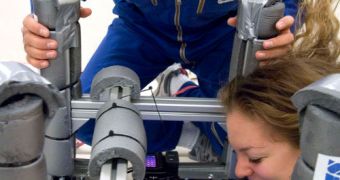Officials with the European Space Agency (ESA) say that the suborbital flight is the new frontier in space, providing a low-cost, shorter-duration alternative to fully-fledged orbital sorties. As such, the agency is currently accepting proposals about how suborbital flights could be best exploited.
When a spacecraft conducts a suborbital flight, it means that it does not achieve orbital insertion, but reaches space in either case. The difference is that the speed with which the craft flies is insufficient to propel it into a stable orbit.
At this point, ESA is keeping track of a variety of proposed spacecraft designs that could make access to suborbital altitudes a common thing. But the organization is mostly interested in the microgravity research capabilities such flights have to offer.
Currently, commercial uses, such as space tourism, are the main driving forces behind the development of machines capable of flying to the edge of space, and spend some 4 minutes in weightlessness.
But experts believe that the sorties could also be used to prepare experiments that are to fly aboard the International Space Station (ISS). Other short-term scientific studies could also be conducted.
As such, ESA is currently asking a variety of industry consortia and commercial suborbital spacecraft developers for more details of their ongoing projects.
The organization is very interested in combining the advantages of parabolic flights and sounding rockets without any of these techniques' weaknesses.
During parabolic flights, in aircraft such as the Vomit Comet, participants experience bouts of 20 seconds of microgravity. Sounding rockets can extend this period for about 15 minutes.
Still, the agency has limited resources, hence its endeavor to cooperate with the private industry. As such, the organization has issued the “Request for Information on Commercial Suborbital Human Flight Vehicles.”
The document calls for developers to submit the characteristics and possibilities of their spacecraft for analysis at ESA. “It is the first time that Europe embarks in this kind of inquiry,” says Simonetta Di Pippo.
“We see this as yet another valuable opportunity to expand the scientific endeavors in space and to promote future exploration missions,” adds the expert, who is the ESA Director of Human Spaceflight.
Developers interested in responding to the ESA request may do so until February 15, 2011.
Their replies must include spacecraft characteristics, related opportunities for microgravity research, payload and crew requirements, as well as construction schedules and costs.

 14 DAY TRIAL //
14 DAY TRIAL //